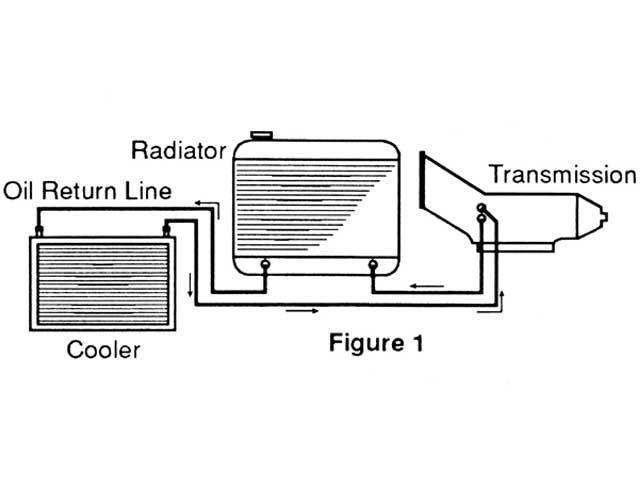How To Install A Transmission Cooler On A Th350

Many of you add aftermarket coolers to your cars and this is always a good idea. Here are some hints.
1-Always mount the cooler in a place that has good air flow and if mounting in front of the radiator always make sure the fin's in the cooler are parallel with the fin's in the radiator to avoid restricting air flow to the radiator. If you must place the cooler in and area with little air flow a FAN is a must.
2-When Installing coolers make sure lines are clear of anything that can rub them and always use line that's approved for transmission/hydraulic fluid. Fuel line will not work and will break down in transmission fluid. 3-By passing the radiator is the way I prefer a cooler be set up.
Generally the transmission will run cooler this way and additionally this may take some of the load off the radiators job of cooling the engine. 4-When hooking up multiple coolers several things should be noted.
Aspenone v8 license generator downloads free. AspenTech aspenONE 9.1 AspenTech aspenONE product of Aspen Technology, a set of unique, complete and very powerful for simulation and design of processing plants and is the main software used in chemical engineering and petrochemical. The collection includes several software is the most common and widely used of Aspen HYSYS and Aspen Plus software for design and simulation of processes and software needed stages and equipment Aspen Exchanger Design and Rating or Aspen EDR – which is actually the perfect alternative development programs + Aspen HTFS and Aspen B-JAC is – is for the design of heat exchangers.
Hdd regenerator klyuch 2011. Have new trans lines and would hate to hack them up to install a external trans cooler. Is there a way to do it without cutting the lines?
The cooler itself is a restriction of flow and this restriction while not a problem for the cooling or lube to the trans can cause excessive pressure inside the converter. This can force the converter against the flex plate more so than normal and cause wear to the engine thrust bearing.
A stopped up or severely restricted cooler or cooler lines can do the same. So when installing more than one cooler its advised to put them in parallel with each other, This means one line from the trans is split with a Y and one line run to each cooler then out of each and into a Y back to a single line running to the trans.
This will assure adequate cooling while reducing the wear to the engine thrust bearing. Always use line that's at least as large as the inlets in the cooler, Avoid extreme twist or turns in them particularly with rubber lines. 5-Type and brands of coolers; I really have no preference here as far as brand. From my experience and expensive brand name or a generic unit appear to do the same job.
I have found the stacked plate (Flat tube) Types when measured inlet to outlet temp drop tend to be more efficient in the same dimensional sizes with a greater temperature drop. I did a test once with two coolers in parallel one round tube and one flat with a laser thermometer to determine this. 6-This is not specifically about a cooler but about cooling.
Always be sure that the metal lines coming from the transmission under car do not contact the headers or exhaust. I once had a car where the transmission temps would sky rocket when the car was being run hard and couldn't understand why.
I after some looking around found that the cooler lines in and out were pinned against the headers. This would super heat the fluid when the headers got hot.
Moved them away and the problem was solved, So always keep trans cooler lines factory or otherwise as far away from the exhaust as possible. 7-Trans temps- This question gets ask a lot.
What's TOO HOT? Well ideally you want you average temp to stay under 190 degrees however I would not get to concerned till the temps get at and or over 230 degrees. Heat can damage a trans but with the exception of extreme heat 250 or higher this damage is a long term killer by breaking down fluid and causing rubber seals to harden and break.
8-Never use your cooler lines to remove fluid from your transmission by starting the engine or in and attempt to flush by catching fluid in a pan while adding fluid to the dipstick. When this is done no lube is being sent to the planets and bushings and they can go dry and melt down very quickly destroying or significantly shortening the life of your transmission. 9-It is advisable to fully and properly flush a cooler especially when a converter failure is involved. Where a transmission internal failure is unlikely to put debris in the cooler since all fluid coming from transmission must travel through the trans filter. The fluid coming from the Pump or converter does not and any debris from these will certainly end up in the cooler.